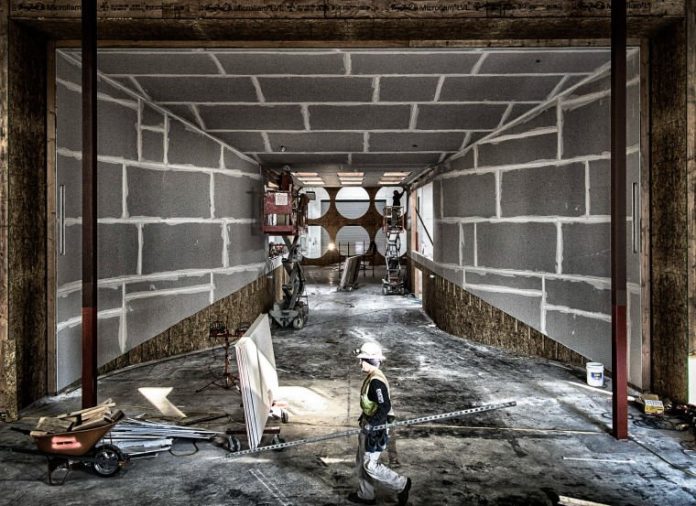With uninhibited fanfare and a buildup of anticipation, Specialized Bicycle Components introduced its own bicycle-specific wind tunnel at its Morgan Hill headquarters to a gathering of dealers, athletes and media Thursday night.
A team of Specialized engineers, designers and builders explained the wind tunnel, which took about seven months to build under a thick veil of secrecy, will help the company simulate the variety of wind resistance faced by cyclists of all skill levels, and study the effects of aerodynamics as they develop new products.
“Aero is everything,” said Mark Cote, Specialized Manager of Aerodynamics R & D. “This is a fundamental shift in how we think about air. Every product and athlete will be faster.”
The wind tunnel occupies roughly the middle two-thirds of a warehouse on Concord Circle, just a few steps away from Specialized corporate offices. Six large fans at one end of the sterile-looking tunnel and a “honeycomb” mesh of composite materials at the other regulate air flow across the middle of the facility, where a bicycle and rider sit atop a platform hooked up to sensors and measurement devices that detect the minute effects of every slight variance of wind speed changes.
An operator on the other side of a giant window looking into the tunnel sits in front of an array of monitors, adjusting the “wind” speed, reading the sensor outputs and rotating the bicycle platform to replicate headwinds, tailwinds and crosswinds.
Those intricate details might result in only small changes in the rider’s velocity, but those changes can make all the difference for athletes such as the professional cyclists who compete on Specialized’s many teams, Cote said.
But it’s not only experts who will benefit from the new ground-breaking facility, as Specialized and its team of engineers and physicists will use the wind tunnel and the data gathered from it to develop products across its full line of products, including recreational, commuter, mountain and road bicycles. The technology will also play a role in improving the company’s helmets, clothing and every product Specialized makes that is touched by the wind, the aerodynamics team said.
As Specialized CEO and founder Mike Sinyard said, the wind tunnel will further the company’s perennial effort to always improve the cycling experience for anyone who rides.
“One of the things for Specialized is, and always has been, to focus on the rider’s need,” Sinyard said at the unveiling. “A time trial (professional) rider has certain needs, a commuter has certain needs. We want to focus on the technology that is important for all of these riders.”
Specialized staff started designing the high-tech tunnel about 17 months ago, but the concept was conceived with a sketch on the back of a napkin about four years ago, Cote said.
Thursday was the first time anyone outside Specialized has seen the facility, but Cote and his co-workers expect to see professional cyclists and other athletes from all over the world come to Morgan Hill to use the wind tunnel to look for ways to improve their abilities.













